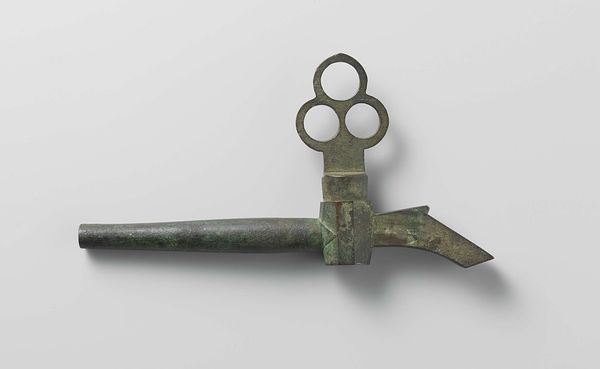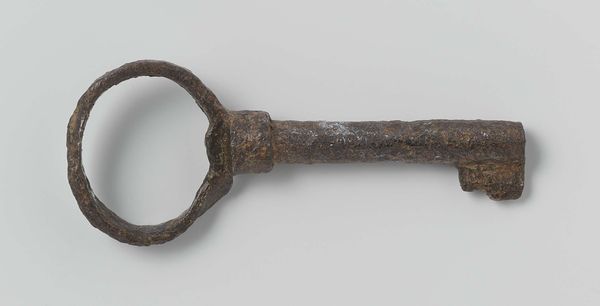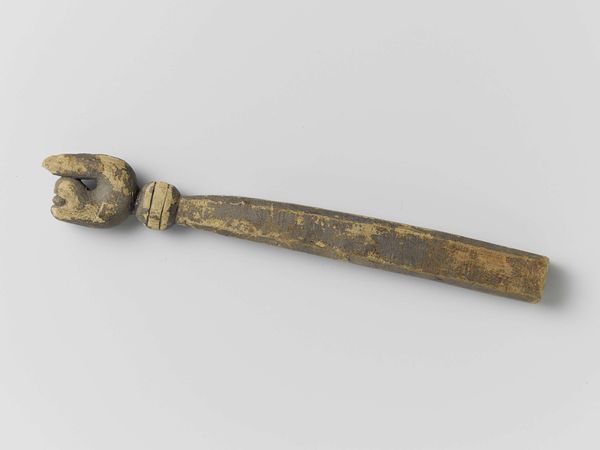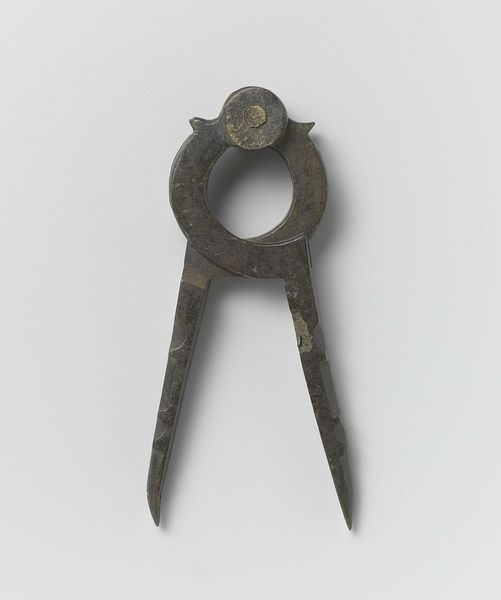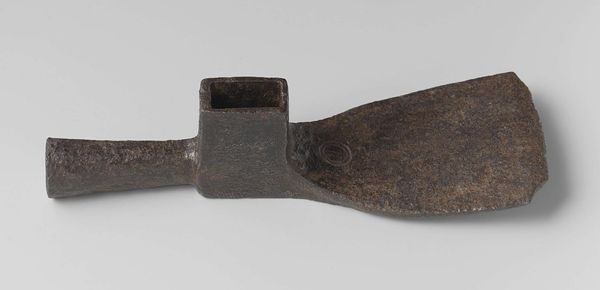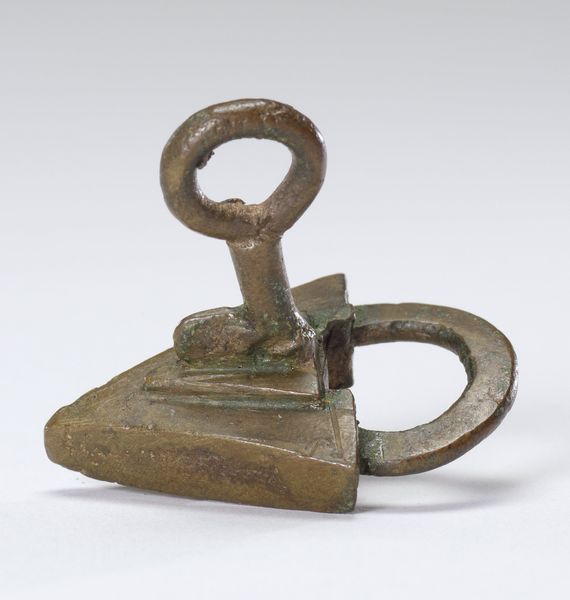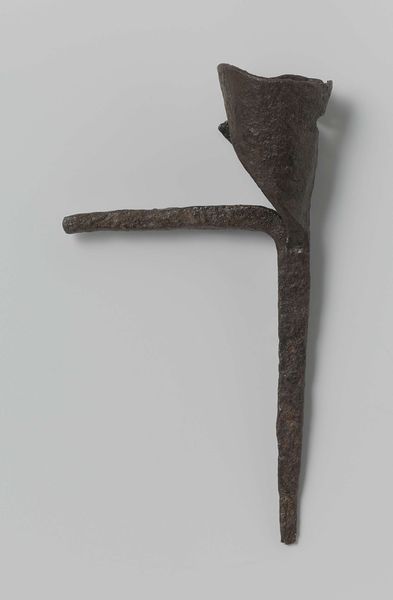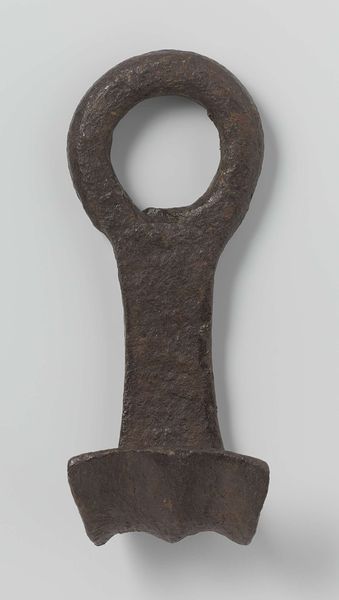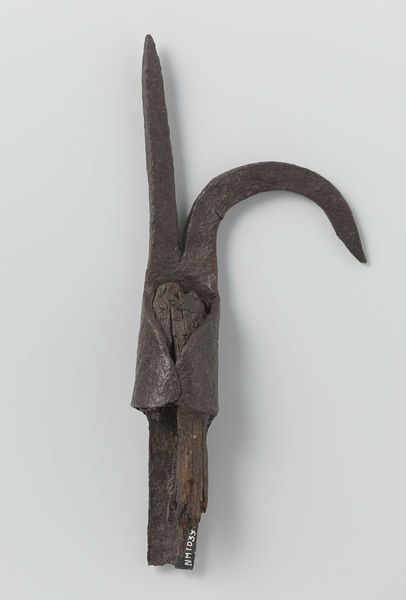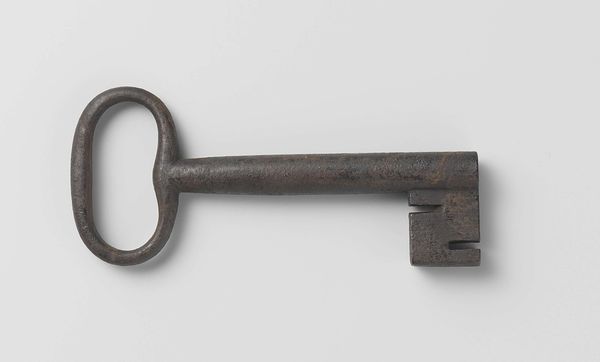
Kraan van koper waarvan het handvat is samengesteld uit drie 'ringen' c. 1590 - 1596
0:00
0:00
brass, metal, sculpture
#
brass
#
medieval
#
metal
#
sculpture
#
form
#
11_renaissance
#
sculpture
#
decorative-art
Dimensions: width 20.2 cm, height 11 cm, depth 2.5 cm
Copyright: Rijks Museum: Open Domain
Editor: We're looking at a brass faucet made around 1590 to 1596. The handle is made of three rings, almost like a stylized clover. I find the craftsmanship quite beautiful for such a functional object. What strikes you about this piece? Curator: What I find interesting is how objects like this, seemingly mundane, offer a glimpse into the daily life and social structures of the time. This isn't just a faucet; it's a symbol of access, control, and even status. Who had access to water, and where? Was this in a private home or a public space? Editor: That's a good point! It hadn’t occurred to me to think about the implications of water access in that era. How would its location change its interpretation? Curator: If it were in a wealthy household, it might represent luxury and control over resources. In a public bathhouse, it speaks to communal life and hygiene practices, which were deeply intertwined with social hierarchies and religious beliefs. Notice also how decorative it is – it’s meant to be seen and admired, not just used. Do you think this decoration changes our understanding of water in the Renaissance? Editor: I think it does. Seeing something functional elevated through artistry challenges our assumptions about utility versus art. Perhaps everyday objects were more deeply valued for their aesthetic contribution. Curator: Precisely. The Rijksmuseum placing it on display today alters its purpose once more; now an artifact, an example of Renaissance metalwork. How a museum contextualizes this type of object frames its historical value and continues the evolution of its reception. Editor: It's amazing to consider how many stories can be drawn from just a single faucet! I'll definitely think about these societal layers when viewing decorative art in the future. Curator: And I will contemplate how presenting everyday items can challenge the conventional narrative of Art History itself.
Comments
No comments
Be the first to comment and join the conversation on the ultimate creative platform.
